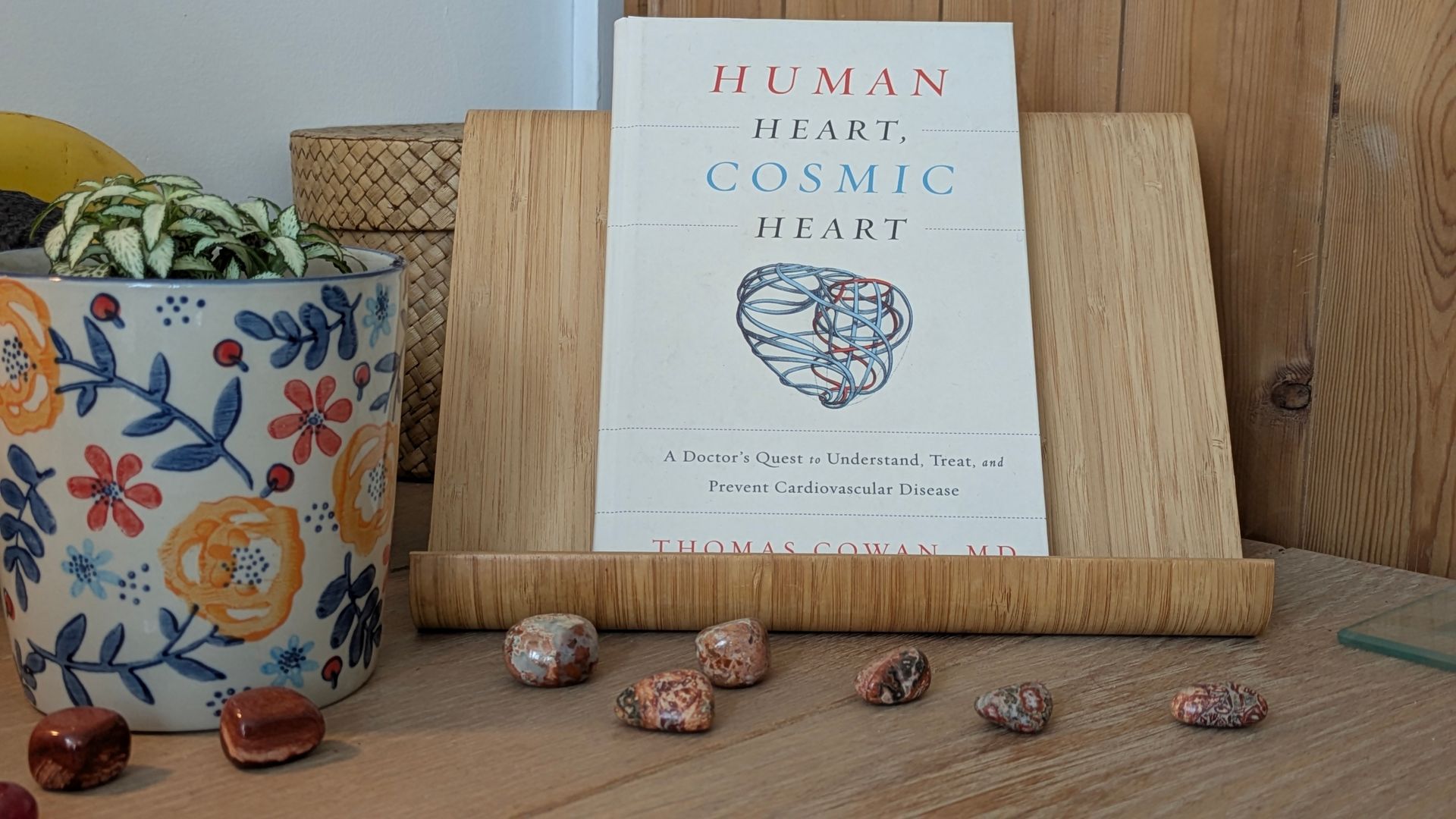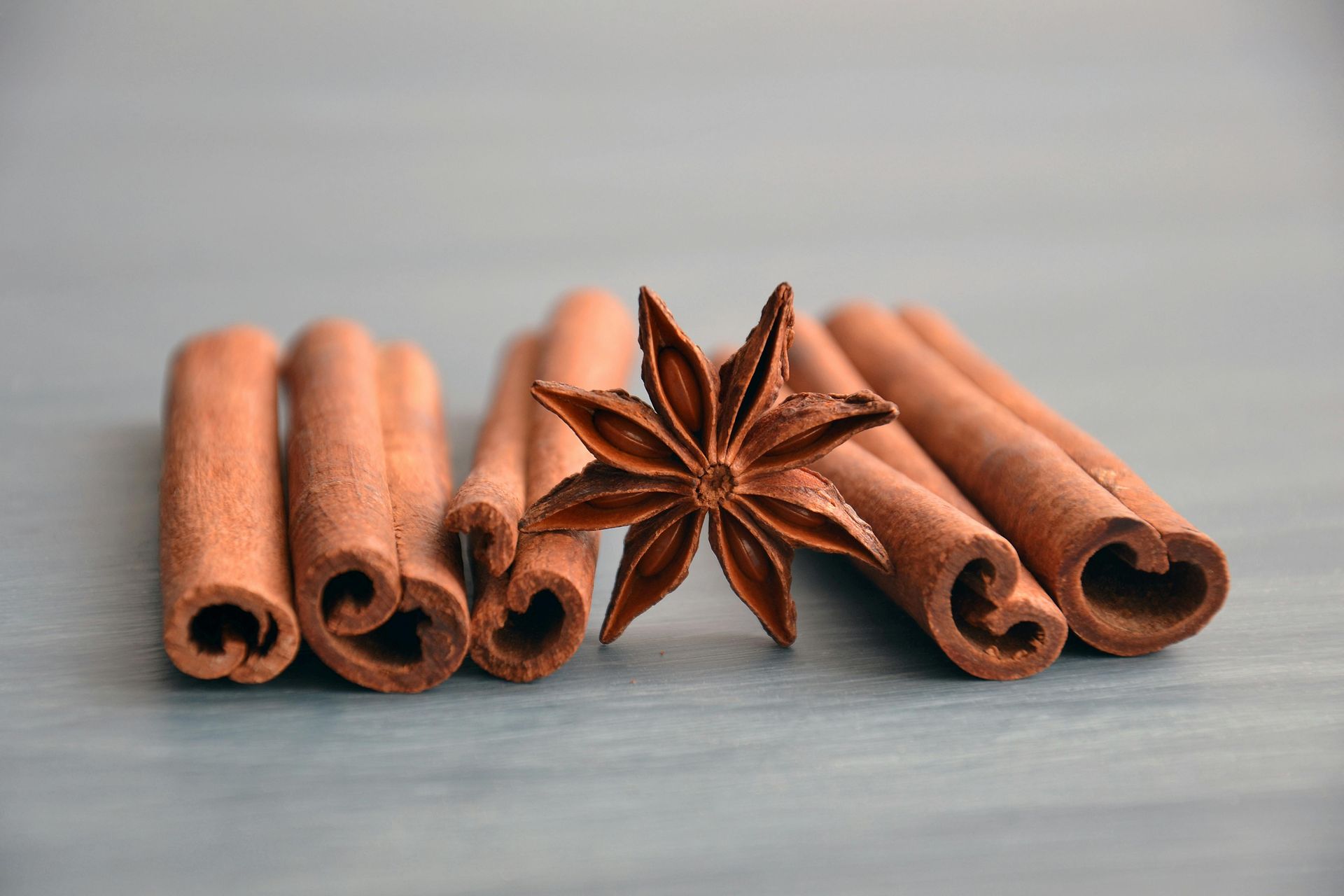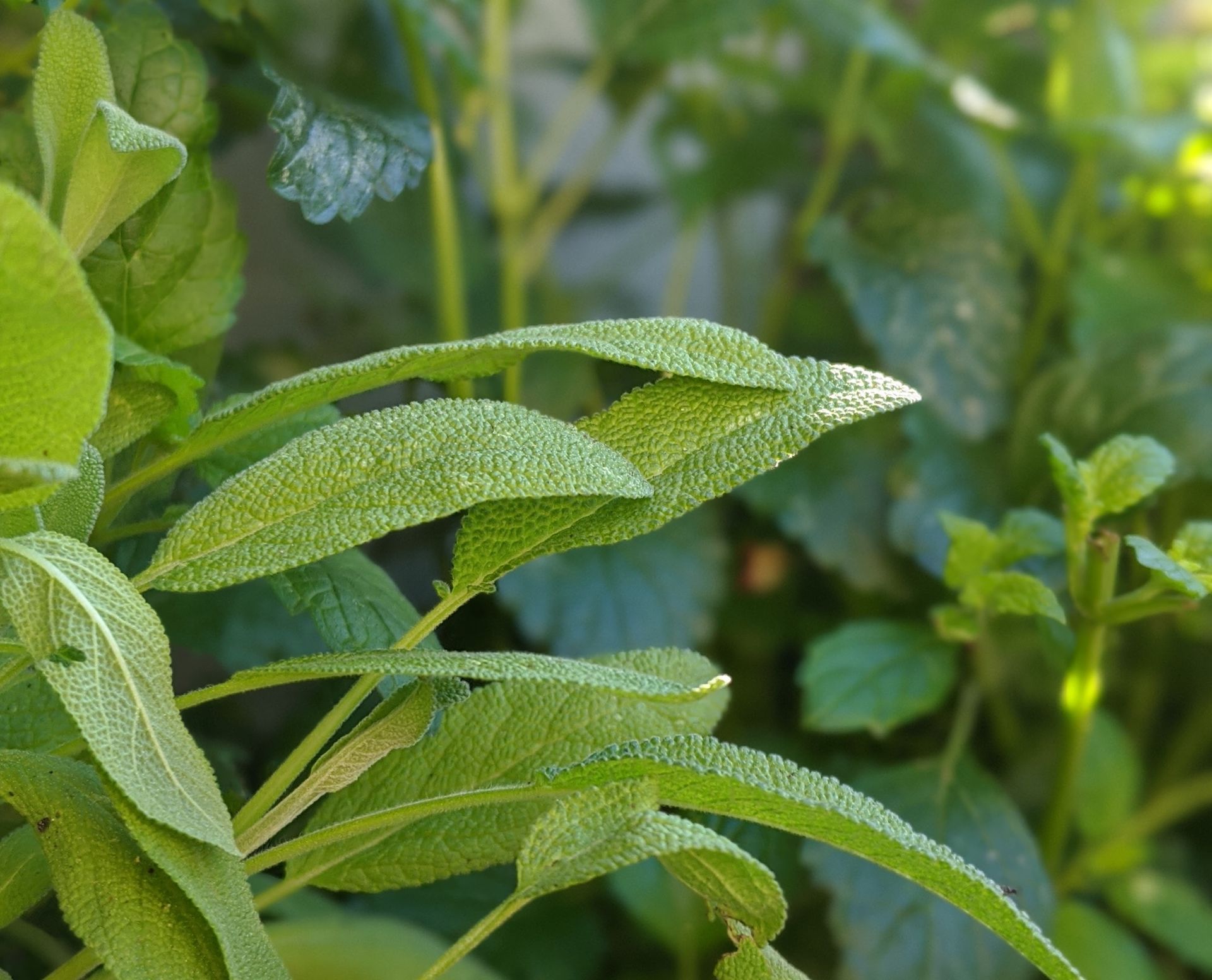A Healing Spice (Ginger)
Ginger contains powerful components for cleansing and gentle healing
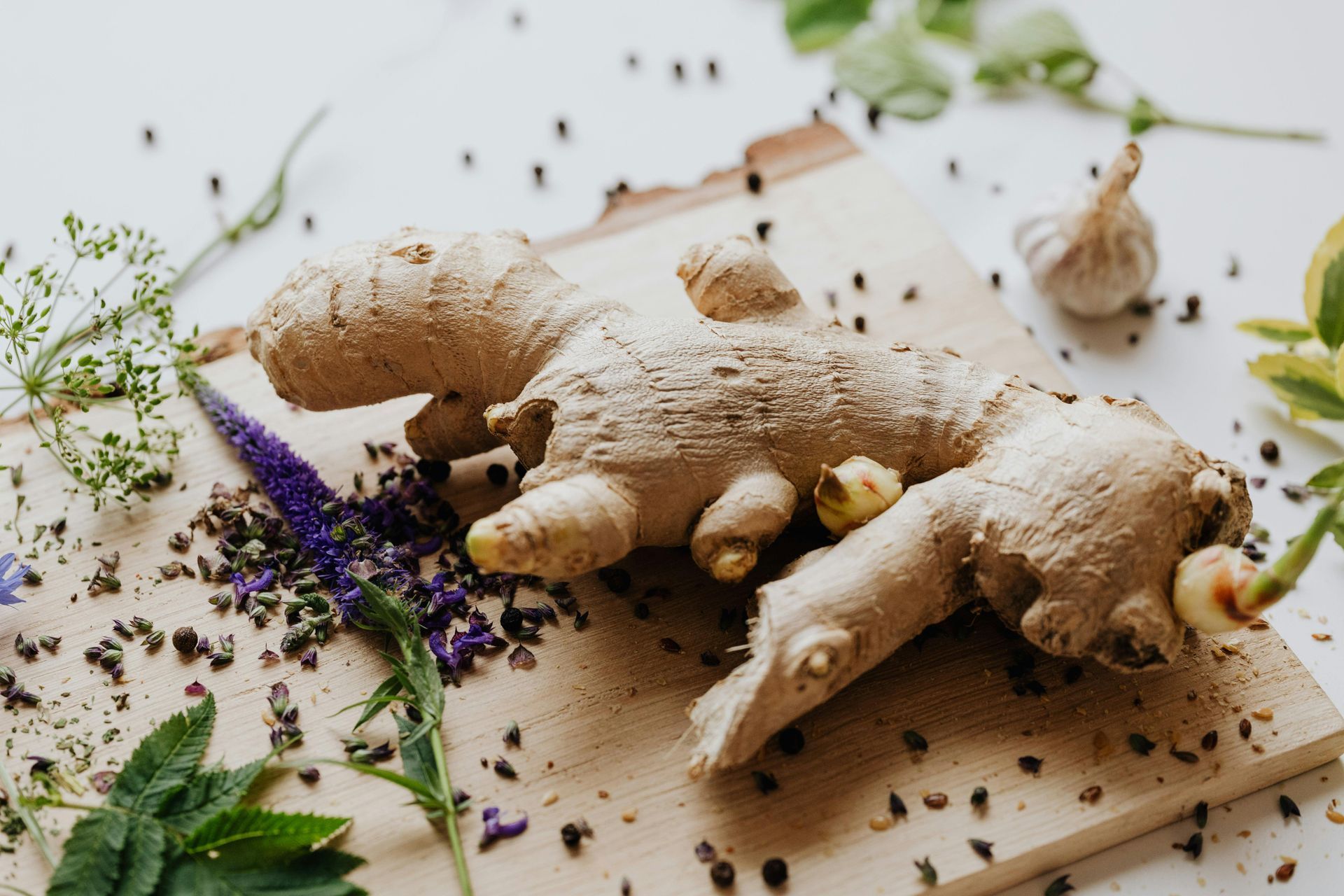
A Healing Spice Guide
Ginger is the third spice to feature in my new Healing Spice Guide.
Ginger is not a root, it is a rhizome that grows underground in a similar way to a Potato. This herbaceous tropical perennial resembes Turmeric with it's gnarled stems and fleshy underground part. The oval lanceolate evergreen leaves are long and very fragrant with spiky tips.
Ginger leaves are considered to be a herb. They can be dried to use as a topping or infused into syrups and fillings for baking for a light, herbal flavour in desserts. Ginger loves a warm climate and flourishes in tropical weather in places like India, China, Fiji, Indonesia and Peru.
Ginger’s generic name, zingiber, comes from the Greek word, zingiberis, which comes from the Sanskrit name of the spice Singabera which means horn-shaped or antler-shaped. Ginger is part of the zingiberaceae family which includes other spices including Turmeric, Galangal and Cardamom.
Ginger is a fiery spice that has been recognised as a symbol of power, protection and vitality for thousands of years. Ginger’s long history is woven into mythology, folklore and cultural traditions worldwide.
Ginger contains gingerol which is a natural component of the Ginger rhizome. This supports gastrointestinal motility which is the rate at which food exits the stomach and continues along the digestive process. Eating Ginger encourages efficient digestion as it prevents food lingering in the gut.
Ginger has many health benefits which include helping to reduce nausea, manage weight loss, protect nerve function and reduce the risk of cancer.
I hope you enjoy discovering the cleansing and healing benefits of Ginger - a wonderful addition to your healing herbal teas with many different uses for your general good health, nourishment and wellbeing.
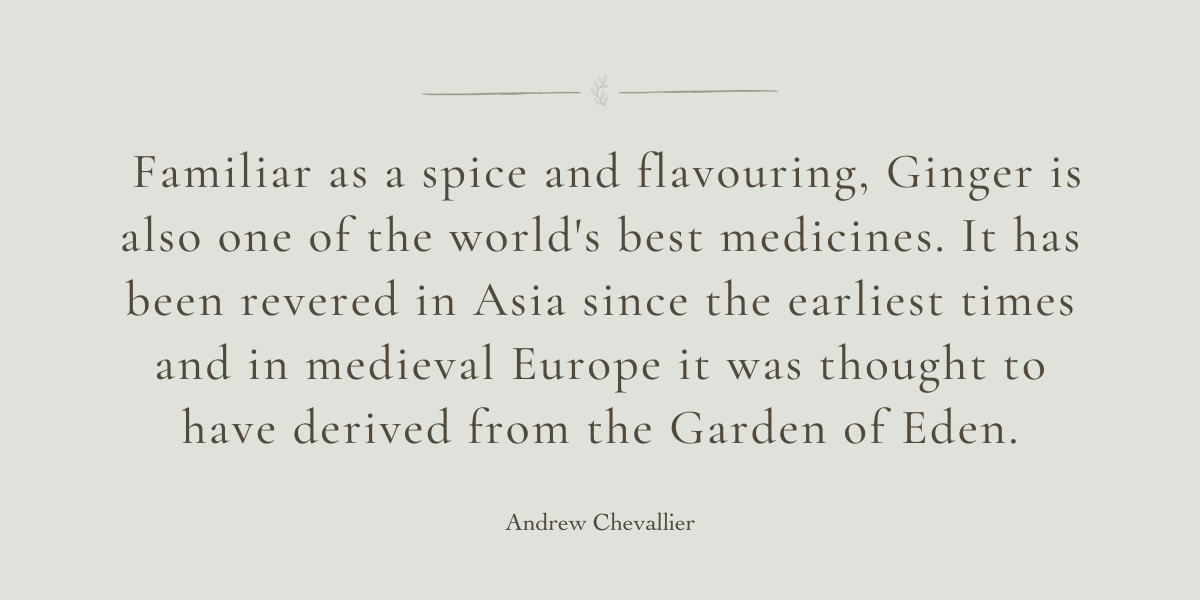
Folklore
In ancient times, Ginger was highly regarded as a spiritual cleanser and was used before and during holy days as a way to awaken and purify the body, mind and spirit.
Equally delicious and spicy in sweet or savoury dishes, served hot or cold, or used dried or fresh, Ginger is a prized spice that has earned its grand reputation from its use as a medicine, confection, mystery ingredient, condiment, flavouring, stimulant, fragrance and drink.
This tropical, fiery rhyizome, once named ‘the horned thing’ and ‘the antlered thing’ in ancient Sanskrit, is native to Oceanic Southeast Asia, although its precise origins remain a mystery, Ginger was one of the first cargoes to travel the early global trade routes.
As Ginger was thought to prevent sea-sickness, it was a friend to Chinese sailors and was widely used in Ancient China to relieve arthritis and kidney problems. Ginger appears in China's first herbal, the Pen Tsao Ching (Classic of Herbs), where it is suggested that: Ginger eliminates body odour and puts a person in touch with the spiritual realm. SOURCE: Richard Whelan - Medical Herbalist.
An old Indian proverb says: Every good quality is contained in Ginger. For the ancient Indians, Ginger is used liberally for both cooking and making healing remedies.
Ancient Greeks would wrap some bread around a piece of Ginger and eat it after a heavy meal to aid indigestion. This led to the creation of Gingerbread which has become a familiar family favourite all throughout Europe.
Gingerbread became a popular treat sold at medieval European festivals and fairs, and some were dedicated Gingerbread fairs. Gingerbread biscuits date back to the 16th century when they were sold in monasteries, pharmacies and town square Farmers' Markets.

Nutrition
Ginger contains trace amounts of many different vitamins and minerals. It is a good source of antioxidant plant compounds such as gingerol and shogaol which help to reduce inflammation amongst other health benefits.
Ginger also contains magnesium and potassium which are essential minerals that support overall health. Magnesium supports essential muscle and heart functioning while potassium benefits heart functioning by helping to control the activity of the heart muscle.
Ginger is well known for aiding digestion and is widely regarded to help prevent colds, flu, motion sickness and vertigo. Ginger can also help to alleviate menstrual cramps, nausea, heart burn, migraines, sore throats, exhaustion, fatigue, and constipation and it is great in providing relief from the stomach flu and food poisoning.
Ginger can easily be incorporated into your meals and Herbal Teas (see below) for daily cleansing, balancing and digestive system support. You can buy fresh Ginger, Ginger Paste and Ginger Powders but remember that fresh is always best. Why not try making your own Crystalised Ginger (see below) for a delicious sweet treat with a kick - perfect for keeping nausea at bay through the day or for gift-giving and special occasions.
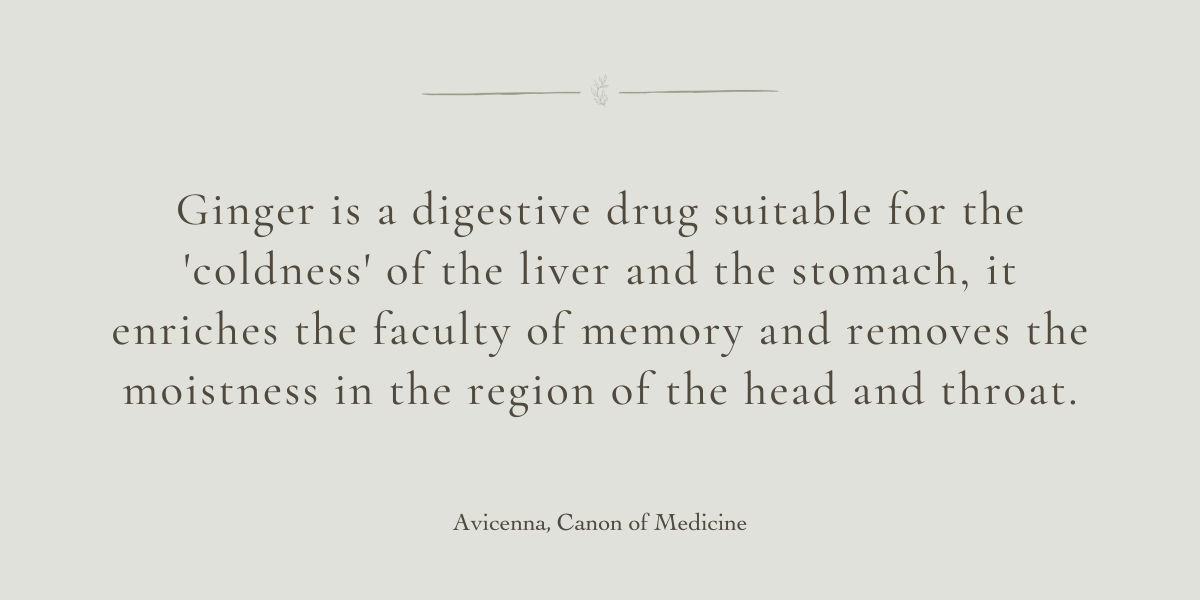
Remedies
Ginger is primarily used in healing remedies as an anti-emetic to prevent or control all kinds of nausea, including motion sickness, morning sickness and vertigo. It is safe in moderate doses and has a warming effect on the body which makes it helpful as an anti-inflammatory for arthritic joint and rheaumatic pain.
Ginger Herbal Tea
For an easy anti-nausea remedy, peel and thinly slice a 2cm piece of freshly peeled Ginger into a cup and pour over just-boiled filtered water. Add Raw Honey to sweeten with a slice of Lemon. Leave to infuse for about 8 minutes before drinking.
Or you could try my deluxe Herbal Tea with additional herbs with many other healing benefits. I make this refreshing drink first thing in the morning using herbs for an inner cleanse and last thing at night with herbs to aid sleep.
My Lemon Herbal Cleanse recipe provides nutritional information on all the ingredients.
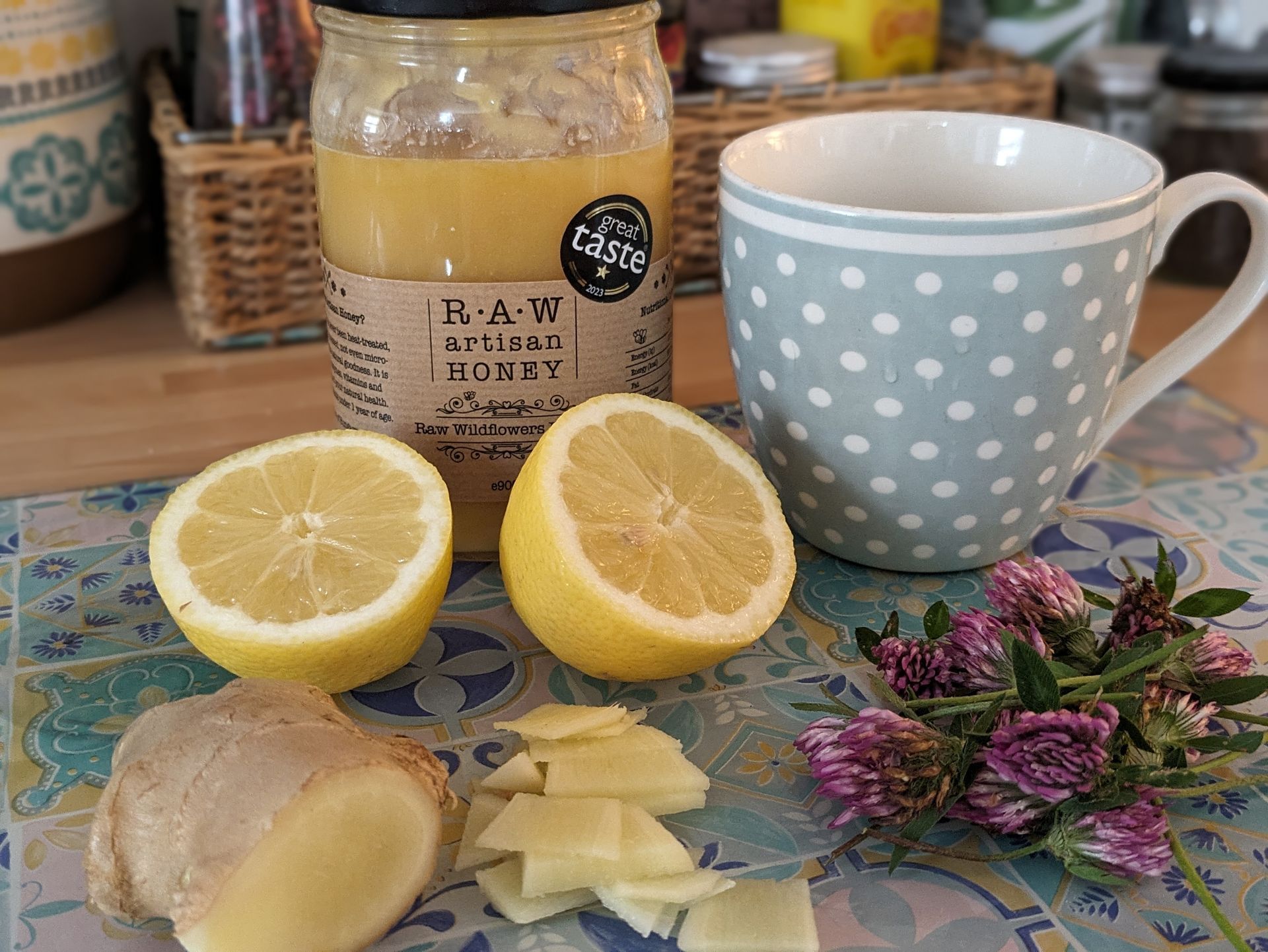
Recipes
Crystallised Ginger
A safe and effective treatment for morning and travel sickness. Store slices in a jar to keep handy to chew on when you are feeling queezy. You will need 350 grams of fresh Ginger and enough Castor Sugar to match weight of cooked Ginger.
- Peel the Ginger carefully and cut into thin slices.
- Place in a saucepan and cover with filtered water.
- Bring to the boil and partly cover with lid to simmer for 1 hour.
- Drain and weigh the cooked Ginger, then weigh the equivalent amount of Castor Sugar.
- Return to saucepan and add 2 tablespoons of filtered water.
- Bring to the boil again and simmer while stirring with a wooden spoon for 20 minutes.
- When Ginger is transparent, reduce the heat and keep stirring until the sugar starts to crystallise.
- Take a large, deep, baking tray and sprinkle with some extra sugar.
- Coat the cooked Ginger slices with the sugar before cooling and storing in a sterilised glass jar.
I hope you enjoy this ongoing series of posts about the healing and health benefits of spices which make a healthy and flavoursome addition to many a warming recipe or herbal tea.
Thank you for joining me on this exciting journey of spicy delights and discovery. I look forward to seeing you again soon.
Sue Cartwright
Spiral Leaf
Thank you for sharing!
for you, for me and for Mother Nature
Latest Posts
All Posts

